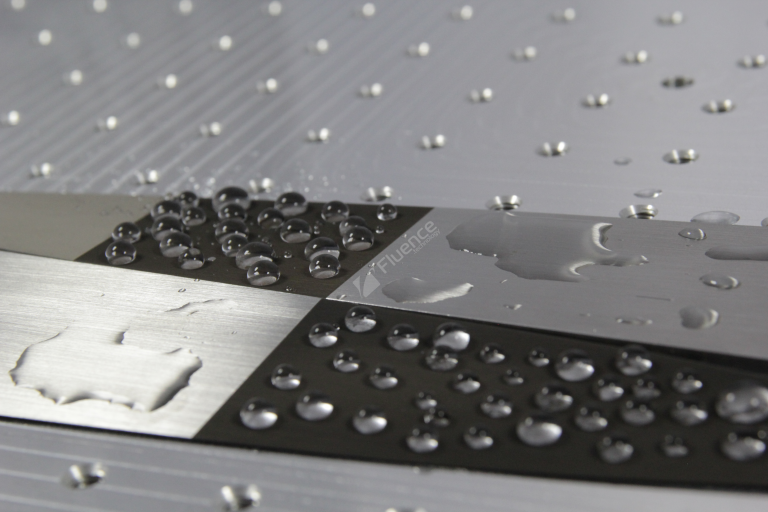 20.04.2020
20.04.2020
Can Ultrafast Lasers Help in Killing Microbes?
During these challenging times, many people have asked us: Can ultrafast lasers be used to help combat the COVID-19 virus?
We don’t claim to be microbiologists, but there are certain studies showing how femtosecond lasers (such as the Fluence Jasper) could possibly help out in the fight against this deadly virus.
Firstly, there is an interesting study written by Fadeeva et al. (2011). https://pubs.acs.org/doi/abs/10.1021/la104607g
The study shows that superhydrophobic microstructures on a titanium surface can create antifouling properties – preventing certain bacteria strains from being able to attach to this surface. Those superhydrophobic structures can be made with a femtosecond laser, like the Fluence Jasper, as shown in our video:
Similar results were obtained in a study by Shaikh et al. (2019).
https://lia.scitation.org/doi/abs/10.2351/1.5081106
This study was conducted on titanium, and titanium alloys.
A different approach is taken by Cai et. al (2019).
https://www.sciencedirect.com/science/article/pii/S0924013619301347#fig0005
Cai joins the use of ultrafast laser-generated microstructures with silver particle deposition in order to create antimicrobial surfaces.
Finally, there is some fascinating research on copper, completed by Zeiger et al. (2014).
https://onlinelibrary.wiley.com/doi/full/10.1002/mbo3.170
It is well-known for copper to have antimicrobial properties. Zieger’s fascinating research shows that surface structuring can further enhance this property.
The above studies show that although ultrafast lasers would not be used directly in killing the virus, they can be used to create microstructures on which the virus would struggle to exist. Those special surfaces could be very useful in combating the transfer of the virus through touch. With the manufacture of products such as structurally-enhanced door knobs, handles and utensils, there is some hope that we can at least limit the transmission of COVID-19.